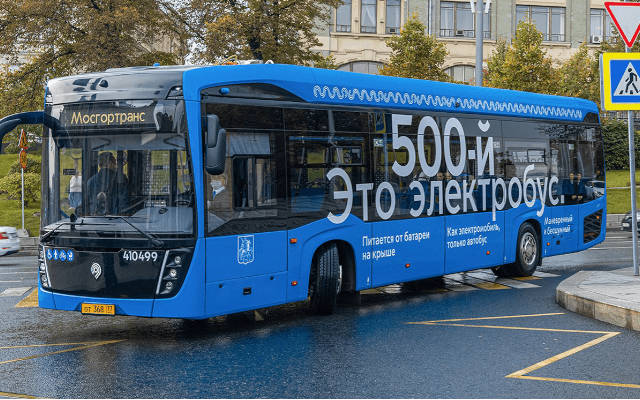Moscow's Electric Bus Expansion Amid the Ukraine War

Moscow purportedly has the largest e-buses fleet in Europe
By EVWorld Si Editorial Team
Moscow is expanding its electric bus network, including plans for autonomous vehicles. However, the war in Ukraine is straining the city's broader transit and economic systems. Here's a closer look at how the conflict has shaped transport in Moscow.
1. Electric Bus Expansion: Ambitious Growth Despite Constraints
Since late 2018, Moscow has rapidly grown its electric bus fleet. Domestic manufacturers like GAZ and KAMAZ delivered over 1,000 buses by 2021, making it Europe’s largest electric bus fleet. By mid-2024, the total surpassed 1,700 buses across roughly 130 routes, reducing CO₂ emissions by about 130,000 tons. The city aims to replace all diesel and CNG buses with electric and hydrogen models by 2030.:contentReference[oaicite:0]{index=0}
2. Infrastructure Strain: Aging Public Transit and Route Closures
Many Russian cities—including Moscow—are struggling with outdated public transport. By 2023, some regions eliminated up to 99 routes, particularly trolleybuses and trams, due to extreme wear and slow replacement. Nearly 40 percent of existing vehicles were past their service life.:contentReference[oaicite:1]{index=1}
3. Fuel Shortages and Rising Costs
Ukraine’s drone attacks on Russian oil refineries have slashed refining capacity by up to 17%, triggering sharp gasoline and diesel shortages. Wholesale prices have spiked by over 50%, and regional rationing has started—though Moscow remains relatively insulated thanks to its infrastructure.:contentReference[oaicite:2]{index=2}
4. Cyber and Physical Disruptions to Transport
Ukraine-linked cyber activity has reportedly targeted Moscow’s transit systems. The subway’s app and website faced outages, disrupting services like card recharges—a reminder of vulnerabilities in the city’s digital infrastructure.:contentReference[oaicite:3]{index=3}
Additionally, partisan sabotage—sometimes referred to as the “rail war”—has affected railway infrastructure. Railway networks are strategic to Moscow’s logistics, and while swift repair brigades limit long-term damage, sanctions also curtail spare parts supply.:contentReference[oaicite:4]{index=4}
5. Economic Pressures on Moscow’s Transport Network
The war-driven economy and sanctions have hit civilian infrastructure hard. Freight transport has dropped 30–40% early in 2025, imports have similarly declined, and Moscow’s budget reserves are nearly depleted.:contentReference[oaicite:5]{index=5}
Meanwhile, key transport and communal infrastructure suffer from underinvestment due to diverted defense spending. Repairing aging infrastructure—like heating systems—will further stretch budgets.:contentReference[oaicite:6]{index=6}
Conclusion: Forward Momentum Meets Wartime Reality
Moscow’s transition to electric and potentially autonomous buses is progressing—but against a backdrop of war-induced delays, funding constraints, infrastructure wear, and logistical hurdles. Fuel shortages and cyber threats underscore the fragility of the city’s transit systems, even as electric expansion continues.
Sources
- Tribune India – Electric Bus Fleet Grows as Driverless Technology Arrives
- Wikipedia – Electric buses in Moscow
- Reddit / r/NAFO – Public transport route closures due to wear
- The Guardian – Fuel crisis following Ukrainian attacks
- AP News – Ukrainian drone attacks lead to fuel shortages
- Reddit – Subway app disruption in Moscow
- ACLED – Rail sabotage within Russia
- The Moscow Times – Strategic importance of railways
- Espreso.Global – Moscow's economy shows signs of civilian crisis
- USIP – Ukraine war’s toll on Russian infrastructure and services
- The Moscow Times – Hidden costs of Russia’s war-driven growth
Original Backlink
Views: 133
Articles featured here are generated by supervised Synthetic Intelligence (AKA "Artificial Intelligence").
